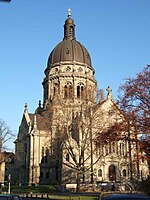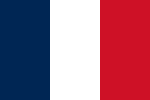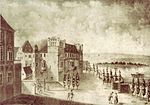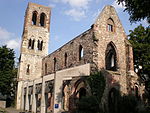Landesmuseum Mainz
1937 establishments in GermanyArt museums and galleries in GermanyMuseums established in 1937Museums in Mainz

The Landesmuseum Mainz, or Mainz State Museum, is a museum of art and history in Mainz, Germany. In March 2010 it reopened in full after an extensive renovation.The museum has its roots in a painting collection donated by Napoleon and Chaptal to the city of Mainz in 1803. It moved into its current location, in the former electoral stables, in 1937, by which time it had grown significantly. It received its present name in 1986, and was renovated and modernised from 2004 to 2010.
Excerpt from the Wikipedia article Landesmuseum Mainz (License: CC BY-SA 3.0, Authors, Images).Landesmuseum Mainz
Große Bleiche, Mainz Altstadt
Geographical coordinates (GPS) Address Nearby Places Show on map
Geographical coordinates (GPS)
| Latitude | Longitude |
|---|---|
| N 50.003888888889 ° | E 8.2677777777778 ° |
Address
Golden-Ross-Kaserne
Große Bleiche 49-51
55116 Mainz, Altstadt
Rhineland-Palatinate, Germany
Open on Google Maps











